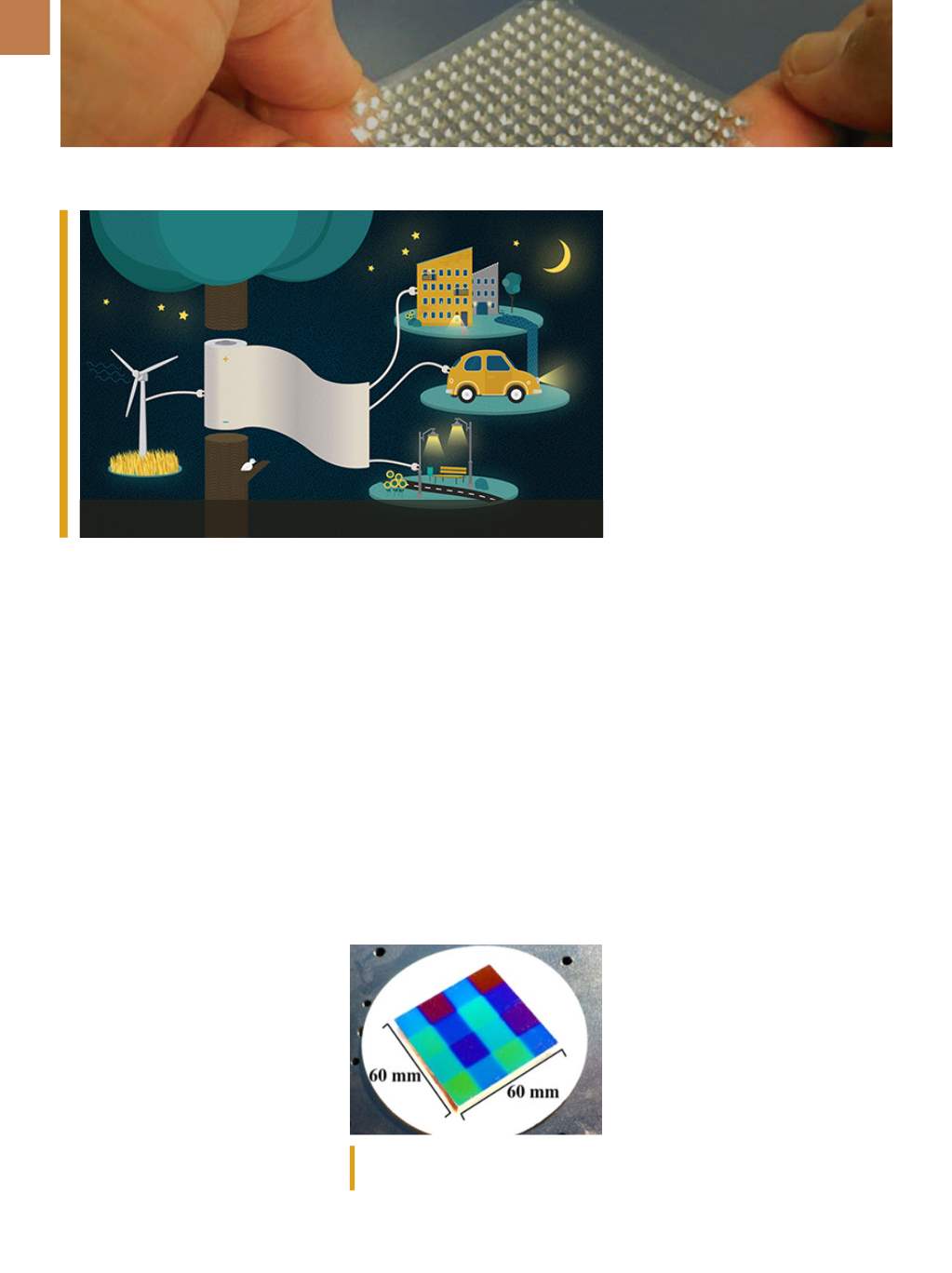

A D V A N C E D M A T E R I A L S & P R O C E S S E S | J A N U A R Y 2 0 1 6
1 4
POWER PAPER
Researchers at Linköping Univer-
sity, Sweden, developed a new mate-
rial consisting of nanocellulose and a
conductive polymer that has an out-
standing ability to store energy. One
sheet of power paper, 15 cm in diam-
eter and a few tenths of a millimeter
thick, can store as much as 1 Farad—
similar to today’s supercapacitors. The
material can be recharged in seconds,
hundreds of times.
The new material set a world re-
cord in simultaneous conductivity for
ions and electrons and opens the door
to continued development toward
even higher capacity. Unlike traditional
batteries and condensers, power pa-
per is produced from simple materials,
is lightweight, requires no dangerous
chemicals or heavy metals, and is wa-
terproof.
For more information: Xavier
Crispin, +46 (0)11 36 34 85,
xavcr@itn.liu.
se, www.liu.se/?l=en.VIBRANT BUILDINGS TURN
LIGHT INTO ENERGY
Researchers in China developed a
new solar-light-absorbing surface that
can have almost any design, pattern,
and color—useful for turning building
facades and roofs into energy-captur-
ing exteriors without sacrificing aes-
thetics. Because they also use similar
materials as existing solar absorbers,
this new kind of absorber could lead
to wider use of solar thermal technol-
ogy and greater energy efficiency, says
Shao-Wei Wang, Shanghai Institute of
Technical Physics.
At the heart of this technology
are layered surfaces called solar se-
lective absorbers. The absorbers are
covered with multiple layers of trans-
parent dielectric materials, which can
reflect light of a particular color. By
changing the thickness of these layers,
Newmaterial stores energy and can be recharged hundreds of times.
ENERGY TRENDS
researchers can tune the absorber to re-
flect light of almost any shade required.
Some parts of the absorbing layer can
be covered with a thicker transparent
dielectric layer than others, allowing
researchers to create a single absorber
with a rainbow of hues.
http://english. sitp.cas.cn.
NANOFASTENERS ENABLE
NEXT-GENERATION FUEL CELLS
Professor Hee-Tak Kim at the Ko-
rea Advanced Institute of Science and
Technology (KAIST) and his team de-
veloped a new fastening system that
bonds hydrogen and oxygen mechan-
ically rather than chemically, opening
the way to development of fuel cell
membranes that are less expensive,
easier to manufacture, stronger, and
more efficient. A pattern of tiny cylin-
drical pillars was molded on the face of
the hydrocarbon membrane. The pil-
lars protrude into a softened skin of the
electrode with heat. Next, the mechan-
ical bond sets and strengthens as the
material cools and absorbs water. The
hydrocarbon membrane is cast using
silicone molds.
“This physically fastened bond is
almost five times stronger and hard-
er to separate than current bonds be-
tween the same layers,” says Kim. The
newmethod also appears to offer a way
to bond many types of hydrocarbon
membranes that, until now, have been
rejected because they could not be fas-
tened robustly. This would make these
membranes practical for a number of
applications beyond fuel cells such as
rechargeable “redox flow” batteries.
kaist.edu.
Photo of solar selective absorber array on
a glass substrate, taken in direct sunlight.


















